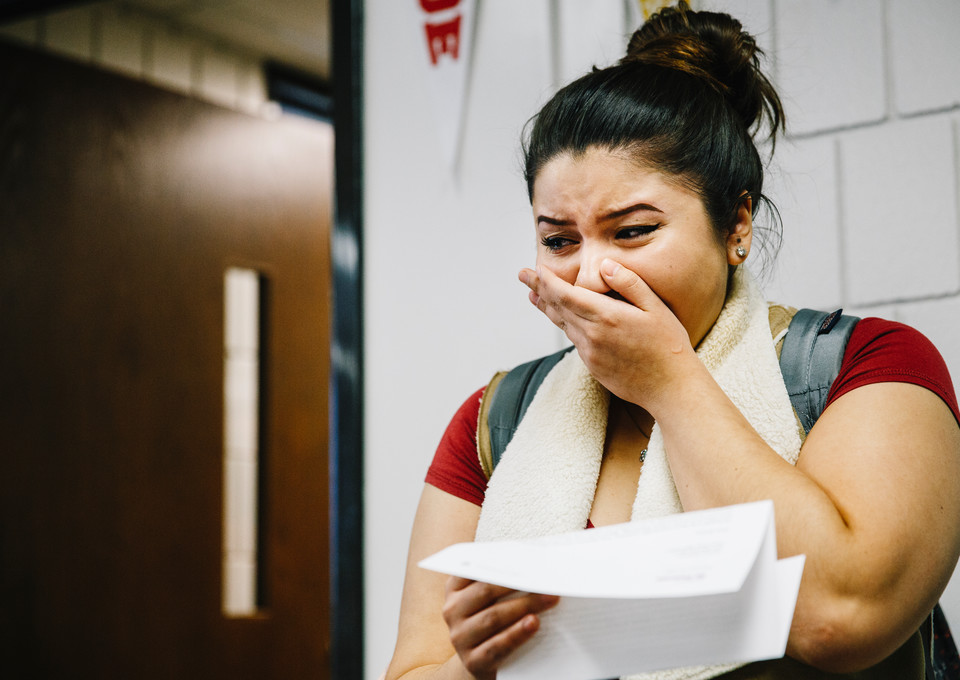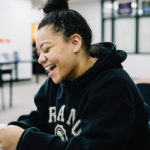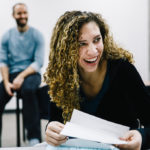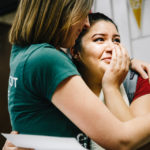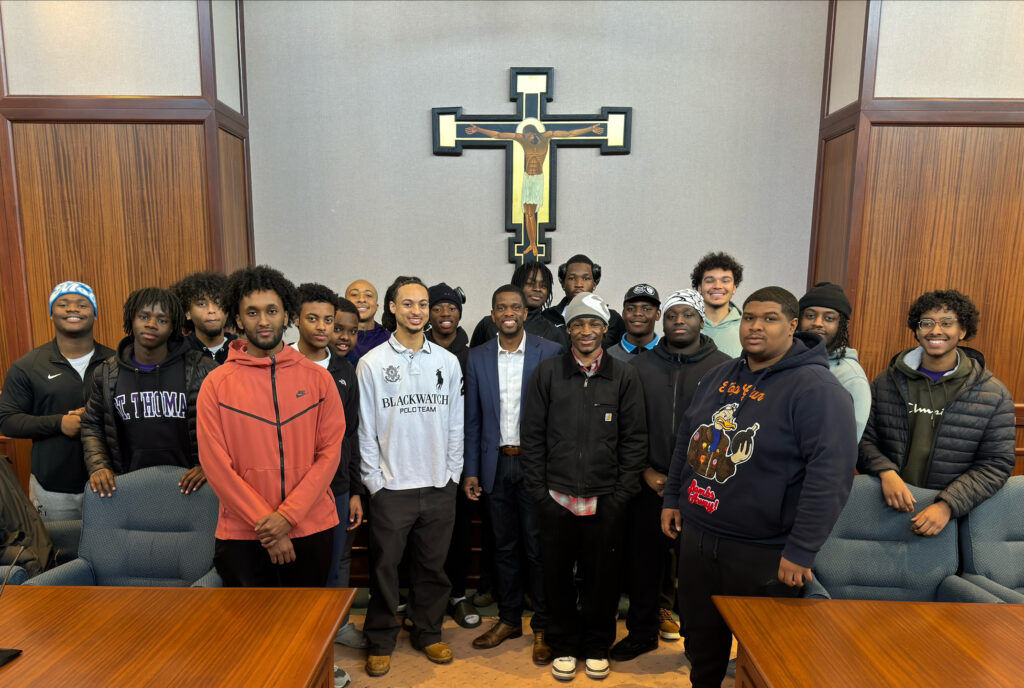Sometimes sending off an application can feel like pitching a paper airplane into the void. Is anybody on the other side? Who’s reading that application? What are they looking for?
The Dease Scholarship Program has recently undergone some changes as to who is catching those paper airplanes. The Dease Scholarship, started in 2004 and named after St. Thomas’ 14th president, Father Dennis Dease, focuses on diversity by bringing underrepresented students to our community of scholars and provides them with a four-year, full-tuition scholarship. Twelve to 20 scholarships are given out each year, and the program has brought more than 200 students to St. Thomas since its inception.
While the selection process used to be completed by the Admissions Office, in order to truly live out the mission of diversity and inclusion, that process has been opened up to involve more members across St. Thomas’ community. Below, some of them discuss how to make the strongest application possible and just why the Dease Scholarship is such an important staple of St. Thomas.
Diversity and inclusion
When an application for the Dease Scholarship arrives at St. Thomas, Teron Buford, assistant director of admissions and coordinator of multicultural recruitment, becomes its guide. And there can be quite a few: Approximately 300 applications arrived this year and last.
This year, those applications were divvied up amongst 10 reading teams. Buford pulled together staff and faculty so people with different viewpoints across campus would have more say in who is receiving a Dease Scholarship.
“The campus community got an opportunity to weigh in on these students,” Buford said. “They got a chance to have a horse in the race in which students are going to come to St. Thomas.”
Students were asked to write two essays as part of their applications: “In 400 words or less, tell us what receiving this scholarship would mean to you and your family” and “In 500 words or less, describe the value of having diversity in a learning community and how you would promote and celebrate different cultures while a student at St. Thomas.”
Both essays were given to the reading teams, along with the name of the student and his or her high school.
Each team selected their top four applications to move onto the next round. While reading, many of the reviewers said the essays that stood out had compelling stories with specific examples, were written well and showed how the student would fit into the St. Thomas community.
Amy Finnegan, assistant professor and chair of the Justice and Peace Studies Department, said the essays that impressed her the most had concrete ideas of how to implement diversity and inclusion at St. Thomas.
“I was most drawn to students who would comment on the [value of celebrating diversity], but also saw that there was equity work that was important to make that happen,” Finnegan said. “[They] talked about mentoring programs they wanted to create, with students of color at home or from outside of St. Thomas.”
Cynthia Fraction, director of the Excel! Research Scholars Program, echoed the sentiment that the more specific an example, the better.
“Students were able to tie in academic experiences and be able to say something to the effect of, ‘This is what I learned in this particular class. It’s teaching and motivating me. I struggled, but I came through, and this is how I succeeded. … And then I used what I learned to give back to a community or give back to someone else,’” Fraction said.
Photographer Mark Brown captured the faces of a few Dease Scholarship recipients at the moment they learned of their selection.
Finnegan said that she liked working in pairs – her partner was Kanishka Chowdhury, professor of English and director of St. Thomas' American culture and difference minor – because it helped to see what other parts of the St. Thomas community were interested in. For example, she said that she liked to see students who focused on lenses of power and privilege. Fraction, on the other hand, liked students who demonstrated how scholarly they were. So, the teams had to explain their reasoning and negotiate to come to conclusions on who moved forward. Repeat this process throughout 10 teams, and a lot of different viewpoints were infused into those semifinalists.
“We really want to mix it up to make sure diverse students are applying, but also that there are diverse thought processes at the table when determining which students move forward in this process,” Buford said.
Pieces in a puzzle
Once the top 40 applications are selected, they return to Buford. He convenes with admissions counselors to ask if there are any students the counselors would like to advocate for. In this regard, Buford advised students who feel strongly about coming to St. Thomas to make sure their counselor knows that.
“Am I more willing – heck, do I even know – to advocate for a student I’ve never had a conversation with?” Buford said. “I don’t think so. The counselors, when they provide feedback for which students they really want to see get this scholarship, [they’re not] going to be pulling straws or names out of a hat. … That student will never know the background stuff that happened between the application and admittance, but they should note that their hard work, along with their commitment to being involved in this process … certainly went a long way.”
After that, Buford sends all the information to Dan Meyer, vice president for enrollment management, and Kris Roach, executive director of admissions and financial aid. Meyer and Roach see everything that comes with students' applications, including their academic profiles and the comments from the readers and admission counselors.
Meyer said that, per student, there are several factors they look at:
- Class rigor: If students have the opportunity to take an AP or IB class, did they, and how well did they do in those classes?
- Grade track: The expectation is that students made strong grades throughout their academic career, or at least finished strong.
- SAT/ACT scores: Meyer emphasized that SAT/ACT scores are not the most important factor, but just another puzzle piece, and that piece should fit in with the overall picture of what the class rigor and grade track are saying.
- Co-curricular involvement, including what type of clubs and activities students have been involved in, how long they were involved and how skills attained from those activities might be beneficial.
“The best qualified candidate isn’t always the student who has the highest academic credentials,” Meyer said. “If that was the case, we could just line these [applications] up and go from highest to lowest. … [We try to] find out who that student is as a person and get to know the things they have done or overcome, the challenges that they met that contribute to their success. I think we’re truly getting a holistic evaluation when we’re selecting a student for the Dease Scholarship.”
Finally, Meyer and Roach look at all the other factors that come into making a well-rounded class, such as balancing gender ratios, geographic diversity and diversity in majors.
With all that in mind, they then select the finalists.
Celebrating the winners
Buford and his team work to notify the winners – and the new process allows for some surprise. Buford partners with a winner’s high school to devise a fun way to share the good news.
“We’ll be kind of hiding, and the student won’t really know, and we’ll come out and say, ‘You got this great scholarship! Congratulations! Come on down!’ The parents will be there, and they cry. It’s a great experience,” Buford said. “I can’t stress enough how much of an impact this scholarship has on students. … That person is going to have their life significantly changed by this scholarship. Those are the moments that float you through this recruitment cycle, knowing that, at the end, we’re going to be able to affect 15-20 students and give them this opportunity that might have not otherwise been available to them. That’s really cool.”
Chowdhury said that, for him, this scholarship was one of the clearest ways St. Thomas can live up to the phrase, “All for the Common Good.”
“This is a wonderful opportunity to open our doors for people who could never afford to come here,” Chowdhury said. “At the moment of release our new brand, All for the Common Good, there’s nothing more material one can cite … than to have programs like this.”
Of course, the other half of that is how vital these students are to St. Thomas’ campus.
“Diversity is one of the pillars we’ve held here at St. Thomas, and diversity is one of Dr. Sullivan’s top priorities for the institution moving forward,” Buford said. “Having a student body in here that is not only diverse and inclusive – and who understand the importance of both – won’t enrich us on paper. It won’t change the average ACT or GPA of an incoming student. But what it will do is create a learning environment where students leave and feel they were exposed to perspectives different from their own.”
And that is valuable no matter where students are coming from or where they’re going.
“We have richer learning and dialogue when we have people coming from different perspectives,” Finnegan said. “It teaches important skills to students, and it’s rewarding, life-giving and fun.”
In her column in the fall 2015 St. Thomas magazine, President Julie Sullivan talked about how these Dease Scholars will “contribute to a richer education and a stronger Tommie network committed to advancing the common good.”
So, how would Meyer like to improve on a program that contributes so much?
“I wish we had more awards,” he said.
